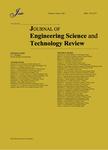版权所有:内蒙古大学图书馆 技术提供:维普资讯• 智图
内蒙古自治区呼和浩特市赛罕区大学西街235号 邮编: 010021

作者机构:Iraqi Commission for Computers and Informatics Information Institute for Postgraduate Studies Baghdad Iraq College of Engineering Baghdad Iraq
出 版 物:《Journal of Engineering Science and Technology Review》 (J. Eng. Sci. Technol. Rev.)
年 卷 期:2023年第16卷第3期
页 面:137-148页
核心收录:
主 题:Generative adversarial networks
摘 要:GAN (Generative adversarial network) is a type of deep learning model that can generate fake data that looks real. GAN consists of two rival neural networks generator and discriminator. There are several types of GAN can be classified based on different criteria such as learning method, network architecture, application, and improvement of training. under the umbrella of learning methods, GAN can be categorized into three types, including unsupervised, semi-supervised, and supervised learning methods. Fully Connected GANs, Convolutional GANs, LAPGANs, AAEs, and Vari GANs are all subtypes of GANs that are distinguished by their respective network architectures, the quantity and composition of layers used in each style distinguishes it from the others. Application areas for GAN include computer vision and image processing, medical imaging, natural language processing, cyber security, and fault detection and tracking. In conclusion, GAN can be categorized in accordance with how training has progressed such as feature matching, probability percentages, regularization, choosing proper optimization, adding noise to discriminator, hyperparameters tuning, normalization, and weight normalization. © 2023 School of Science, IHU. All rights reserved.